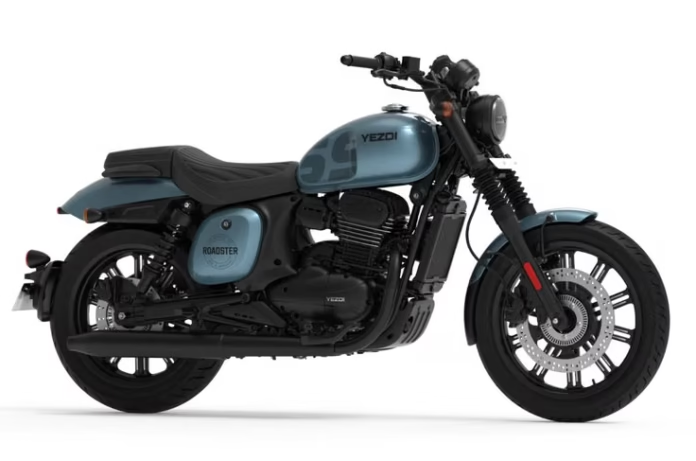The GST revision in India has varying effects on two-wheeler manufacturers, depending on the type of vehicles they produce. Let’s look at what is set to happen and what could happen.
Electric Two-Wheeler Manufacturers: With a GST rate of 5%, electric two-wheeler manufacturers are already at an advantage. This lower tax rate promotes the adoption of eco-friendly transportation, making electric two-wheelers more attractive to environmentally conscious buyers.
With that done, let’s concentrate on IC engine companies.
Hero MotoCorp: As India’s largest two-wheeler manufacturer with a strong presence in the commuter bike segment, Hero MotoCorp stands to benefit significantly from the proposed GST rate cut from 28% to 18%. This reduction would make their bikes more affordable, potentially leading to increased sales. This make sense because regulations have driven the price up dramatically and this could bring it back prices to pre-2020 levels. Hero does not have any product in the 350cc space for now with the Mavrick being discontinued and the products which are yet to come are a year away.
Bajaj Auto and TVS Motor: While these two have large portfolio of under 350cc, they have above it as well. Bajaj could lose momentum on 400cc models it has plans to launch in the future of its own. KTM and Triumph which Bajaj manages in India could take a hit as their 400cc portfolios bring in a good amount of volume and the investment is fresh in a brand new platform that came in 2023. TVS could benefit as its new 299cc engine and 313cc engine could see a price cut, boosting their appeal for impulsive buyers whichever way the policy goes.
Specific Impact on Honda, Yamaha, Suzuki, and Kawasaki
Honda: Honda’s “BigWing” division sells a variety of motorcycles above 350cc, including the popular H’ness CB350 and CB350RS, which are right on the cusp of the 350cc threshold. While some of its models are just under the 350cc mark and might benefit from the 18% GST rate, its larger bikes like the CB500X, CB650R, and CBR650R would face the higher 40% tax rate. This would make them significantly more expensive and could dampen their sales in the premium segment.
Yamaha: Yamaha’s India lineup currently doesn’t have a strong presence in the 350cc+ locally-manufactured segment. Its bikes in this category are typically imported as Completely Built Units (CBUs) or Completely Knocked Down (CKD) kits, which are subject to different tax and duty structures. The proposed GST change would primarily affect any future plans for local manufacturing of larger-displacement models.
Suzuki: Similar to Yamaha, Suzuki India’s focus has been on smaller displacement bikes and scooters. Its larger bikes, like the V-Strom 650 XT, are imported. The proposed GST change would have a direct impact on the pricing of these imported models if the new 40% “luxury” slab is applied to them, potentially making them less competitive.
Kawasaki: Kawasaki has a range of high-capacity bikes sold in India, and the majority of its offerings are well above 350cc. Models like the Ninja 650, Z650, and Versys 650 would all be subject to the new 40% GST rate. This could lead to a substantial price increase, making an already premium brand even more expensive and potentially affecting its sales volume in the Indian market. The Kawasaki Ninja 300 could gain some serious benefits as it is the one that brings volumes. The Versys 300 that was relaunched in India will also benefit. The newly launched 230cc off-road bikes which just got a price cut could become even more enticing.
IMPACT FOR ROYAL ENFIELD ?
Royal Enfield’s fate under the proposed GST changes could change the future of motorcycling in India!
Models below 350cc: Royal Enfield’s bikes with engine capacities just below 350cc, such as the Classic 350 and Bullet 350, would benefit from a reduced GST rate of 18%. This could make them more affordable and attractive to buyers.
Models above 350cc: However, Royal Enfield’s premium lineup, including models like the 450cc and 650cc motorcycles would likely see a 9% price hike due to the proposed 40% GST rate. This could make them more expensive, despite the market share is just 1% right now for motorcycles made in India with 350cc engine and above.
Royal Enfield will continue to have an edge over Honda, Jawa and Yezdi but will get hit by Triumph, KTM, Harley-Davidson and Bajaj.
Market Impact: The proposed GST changes could reshape India’s motorcycle market forever despite any way the Indian policy makers choose to take their decisions. Royal Enfield will have to try much harder to justify the high price to customers for their incoming 750cc motorcycles and existing 450cc and 650cc motorcycles. All this could be done but that will incur serious costs to the brand which it might not be able to fit into the legacy of the brand all together of affordable and simple motorcycling. Royal Enfield’s Sid Lal has made a request for “#TwoWheelsOneGST” in a post on social media. Rajiv Bajaj said in an interview this would force manufacturer to play around the engine cubic capacity and why would the government want that to happen?. We could hear sometime in mid September or early October on what happens next, stay tuned.








